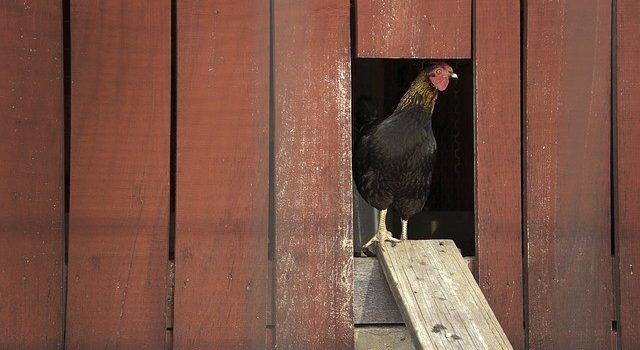Building your own DIY chicken coop is easy with a little patience, a little knowledge and a little help. See what materials you need to get started.
What wire to use for a chicken coop
Deciding on what wire to use for your chicken coop is a very crucial matter. It should be able to keep your chickens in and at the same time keep unwanted visitors out. Chicken wire has actually been in existence since the 1800s. It is simply a thin-gauged, galvanized, flexible wire woven into a hexagonal pattern. The term chicken wire is now generally used to describe any material that can be utilized for fencing your chicken coop, chicken run or even your garden.
There are several types of chicken wire to choose from, and here we will discuss their advantages and disadvantages. I mention it is recommended you use more than one type in conjunction with one another to best protect your chickens.
Chicken Wire
The traditional chicken wire with the hexagonal pattern comes in different sizes but the best size for chickens is the ½ inch and 1-inch chicken wire. The ½ inch should be used when you have chicks and the 1 inch for adults. It is easy to cut and install onto your fence posts. You can use either staples or screws with washers.
The problem with chicken wire is that it is relatively thin and can be easily ripped apart by predators. There have also been cases of chickens and chicks getting their wings tangled in the wires. It should not be used in chicken runs where your hens stay all day without constant supervision.
This type of chicken wire is great as overhead protection against flying predators. It is also good if you want to separate some chickens from the other flock members, such as introducing new ones to your existing brood.
Hardware Cloth
Hardware cloth is welded steel that comes in various sizes with the ½ inch mesh the most effective for chickens. Experienced chicken owners generally use this in their coop and run. It is strong and durable with a galvanized finish for rust protection. It doesn’t stretch out of shape like chicken wire so it lasts longer. Hardware cloth can be a little more expensive but it outperforms chicken wire tremendously in terms of predator protection.
Poultry Netting
Poultry netting is very similar to chicken wire but it is made of plastic. It is very inexpensive and extremely lightweight so it is easier to cut and install. Its use, however, parallels that of the traditional chicken wire and is flimsy and easily destroyed. The best application is as fencing around your flower or veggie garden to keep chickens away.
Metal chicken wire, whether coated or not, is always preferable to plastic. It is sturdier, longer-lasting and more durable. And the choice of either using un-coated or coated wire will just come down to personal preference and budget.
Flooring for your chicken coop
Flooring for your chicken coop is equally important. It should be the type of material that they like to walk on and will not cause them any injury.
Course Sand
Coarse sand is a great option. It is an inexpensive and easy choice, and cleaning involves merely using a cat litter scoop.
Wood Chips
Wood chips are the white wood of the tree, not the bark. Bark chips should not be used as flooring because they tend to go mouldy over time. Wood chips are all-natural, have a clean, light appearance, almost dust-free and chickens love to scratch around in them. Hardwood chips are longer-lasting than softwood chips so are generally preferred by chicken keepers. They eventually break down over a long period of time and provide nutrients to the soil around the coop.
Pea Gravel
Pea gravel is a type of small, smooth stone that resembles peas. It is a longer-lasting option compared to wood but some chicken keepers have reported that their chickens do not like to walk on pea gravel.
Straw
Sun-coloured straw is what many new chicken keepers use, with its sweet, earthy smell. Be warned, it can break down and get soggy very fast, making cleaning extremely difficult.
Lighting for your chicken coop
Chickens need 14-16 hours of light each day for optimum egg production. That should be no problem at all during the summer months. In winter, where days are shorter, you can provide supplemental lighting by using a 40-watt bulb suspended 7 feet from the floor. A 60-watt bulb would be good for a larger coop.
Best Bedding for your chickens
The best bedding for your chickens nest boxes is pine and cedar wood shavings. They offer ample padding for the eggs and are an all-natural pest-repellent. Wood shavings are also great as coop bedding when using the deep litter method.
